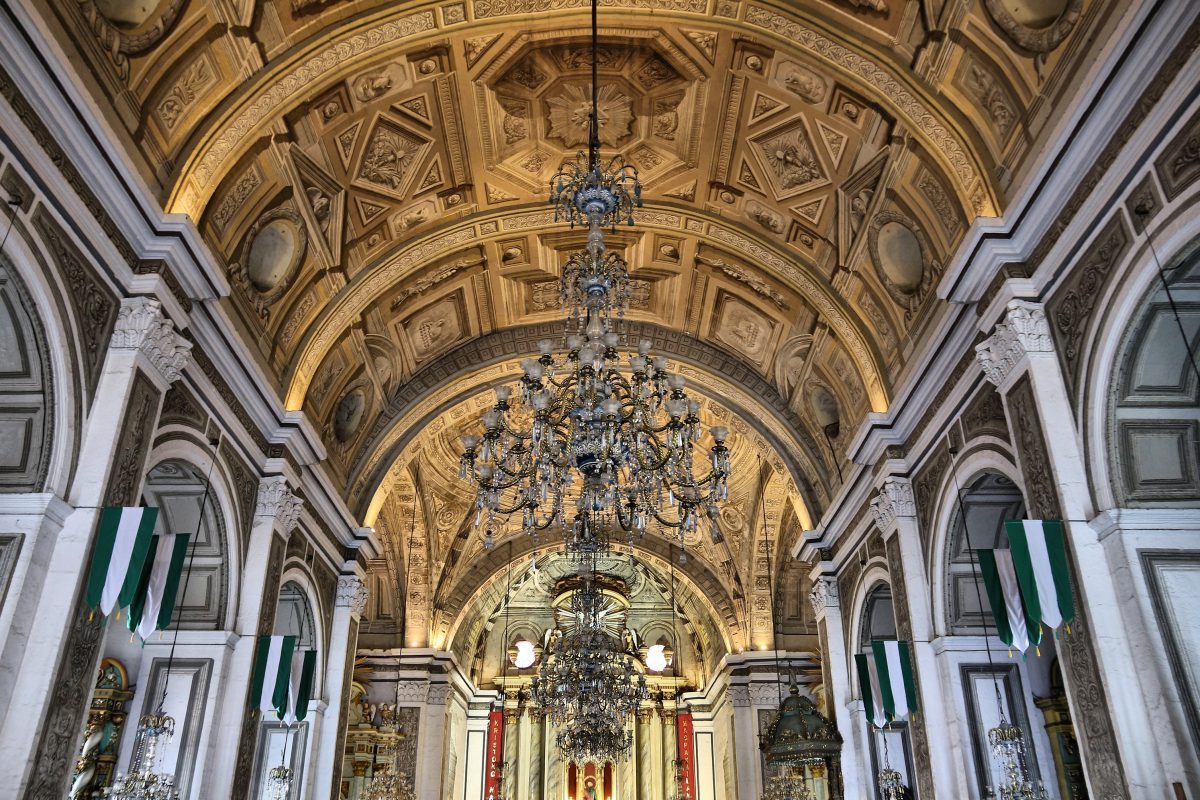Lent, Holy Week, and Easter Sunday are celebrated by Christians around the world, but in the Philippines, it’s different. More than 80 percent of Filipinos are Catholic. Their traditions have influenced the culture and whole communities celebrate together.
For travelers interested in observing these holy days, it’s an ideal time to visit the Philippines. Plan a spiritual experience with your family or with close friends. It’s important to start planning this trip early–booking both travel and accommodations–as many guests visit for the Easter holiday and Filipinos travel to be with family and friends.
Must See Churches
Enhance your journey through the Philippines during the Easter holidays by visiting some of the oldest and most beautiful churches on the islands.

Named a UNESCO World Heritage Site in 1993, the Ming-ao Church has an extensive history. It’s thick walls and mismatched bell towers helped protect the area from invaders during the 18th and 19th centuries. The belfries were commissioned by two different parish priests and the west tower is both older and taller. While visiting this church, don’t forget to go inside and see the solid gold retablo also known as a sanctuary.

Built entirely of red bricks in 1783, the church, commonly known as the Tumauini Church, has been under consideration as a UNESCO World Heritage Site since 2006. It was built in the style of Late Baroque or Early Rococo and its bell tower stands four stories tall.

While this parish dates back to the 1690s, the church building, which is commonly known as Boljoon Church, was first built in 1783. It was listed as a National Cultural Treasure by the National Museum of the Philippines in 2001 and continues to be a candidate to become a UNESCO World Heritage Site. It is well-known for its special ceilings which are made of “tag-ut” which means “coming from trees” and are beautifully painted. They date back to at least 1883.

Completed in 1788, the church commonly known as the Argao Church is a two-level structure built of coral stone. The beautifully painted ceiling tiles are made of wood. The paintings themselves were completed by two artists, one being the renowned Cebuano painter Raymundo Francia. Sadly, the other half was completed by an unknown Boholano artist. As the name suggests, the church was dedicated to the archangel Saint Michael.

Named a UNESCO World Heritage Site in 1993, the church, commonly known as the Paoay Church, began construction in 1694. It is known as a prime example of the Spanish Colonial Baroque Architecture-style which was adapted for the Philippines due to the frequency of earthquakes. You’ll see larger than normal buttresses and stair-style buttresses. The facade is made up of two materials, brick on the lower part and coral on the upper.

Commonly known as the Santa Ana Church, it was established by the Franciscan Order in 1577. The first cornerstone for the larger stone church and convent was laid on September 12, 1720. The image of the patron saint, Nstra. Sra. De los Desamparados – or Our Lady of the Abandoned – was carved in Spain and brought to Santa Ana by Fr. Vicente Ingles, OFM, who was the parish priest at the time.

Within the Archdiocese of Lipa you’ll find this church, commonly known as Taal Basilica. It is considered the single largest church in the Philippines, as well as in all of Asia. First established in 1575, the church was severely damaged by the largest recorded eruption of the local volcano in 1754. The church was then moved to its current location on top.
Tips for What to Expect
If you’ve never been in the Philippines for Holy Week and Easter, you will need to keep a few things in mind.
- Heavy traffic and crowded streets cause problems getting anywhere quickly. Processions involving people, carts, floats, and crowds around the churches are common. Plan to become part of the celebrations and immerse yourself in the experience.
- Many businesses are closed during Holy Week or have shortened working hours. Once you know where you’ll be staying, learn what will be open and be prepared for stores and services to be shut down, including grocery stores and restaurants.
- Some television and radio stations feature reruns or pre-recorded shows during parts of Holy Week, while others play seasonal content to join in the spirit of the holiday.
Plan Your Trip to the Philippines
Spending the holiday living like a Filipino local creates one-of-a-kind, spiritual memories.
The time to plan your trip to the Philippines is now if you want to be a part of this immersive religious experience before it’s gone. If you’re ready, our partners are ready to help you discover the Philippines.

